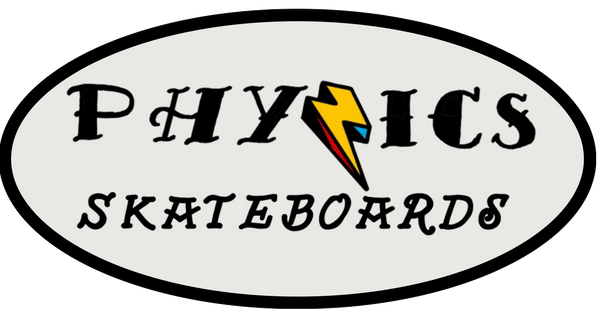Understanding Skateboard Deck Sizes
Understanding Skateboard Deck Sizes
What Is Deck Size?
The size of a skateboard deck refers to its width, length, and wheelbase. These dimensions influence how the board feels underfoot and how it performs in various skating disciplines. Width, typically measured in inches, is the most commonly discussed dimension when talking about deck size. However, the length and wheelbase are equally important, particularly for specialized skating styles or terrains.
Skateboard decks come in a variety of sizes to suit different riders and skating preferences. For instance, narrow decks are often preferred by street skaters for their agility, while wider decks are favored for vert and cruising due to their enhanced stability. Understanding deck size is fundamental for improving your skating experience and achieving your goals on the board.
How Is Size Measured?
Skateboard decks are measured using the following dimensions:
- Width: The distance from one edge of the deck to the other, usually ranging from 7.5" to 10". This measurement determines how much foot space is available on the board.
- Length: The distance from the nose to the tail of the deck, typically between 28" and 33". The length affects the overall stability and control of the skateboard.
- Wheelbase: The distance between the inner mounting holes for the trucks. A shorter wheelbase provides sharper turns, while a longer wheelbase improves stability, especially at high speeds.
These measurements are crucial for understanding how the deck will perform and feel while skating. Each dimension plays a specific role, and selecting the right combination can significantly enhance your skating experience.
How Size Impacts Skateboarding
The size of your skateboard deck has a significant effect on your skating experience. Here’s how each dimension impacts performance:
-
Width:
- Narrow decks (7.5" - 8.0"): Easier to flip and rotate, ideal for technical tricks and street skating.
- Wider decks (8.25" - 10"): Offer more stability, perfect for vert skating, cruising, and downhill riding.
- Length: Longer decks provide more room for larger riders or stability at high speeds, while shorter decks are better for smaller riders and tricks.
- Wheelbase: A shorter wheelbase offers quick, tight turns, while a longer wheelbase enhances stability for downhill or cruising.
Understanding how deck size impacts your skating allows you to make informed decisions that align with your skill level and preferred style. For instance, skaters focused on learning technical tricks might opt for a narrower deck, while those seeking a smooth cruising experience could benefit from a wider and longer deck.
How to Choose the Right Size
Choosing the correct skateboard size depends on several factors, including your height, shoe size, skating style, and personal preference. Here’s a guide:
- Rider Height: Taller riders might prefer wider and longer decks for comfort and control. For example, a rider over 6 feet tall might feel more stable on a deck at least 8.5" wide and 32" long.
- Shoe Size: Larger feet require wider decks to prevent slipping off the edges. A shoe size of 10 or above generally pairs well with an 8.5" or wider deck.
- Skating Style: Technical skaters might choose narrower decks for better maneuverability, while vert or bowl skaters go for wider options for added stability.
Ultimately, the right size for you will depend on a combination of these factors. Testing out different deck sizes can help you find the perfect fit for your skating needs.
Best Sizes for Different Skating Styles
Here’s a breakdown of the best deck sizes for various types of skateboarding:
| Skating Style | Recommended Deck Size | Reason |
|---|---|---|
| Street Skating | 7.75" - 8.25" | Narrower decks are easier to flip and perform technical tricks. |
| Vert/Bowl Skating | 8.25" - 9.0" | Wider decks provide better stability and control on ramps and transitions. |
| Cruising | 8.5" - 10.0" | Larger decks offer comfort and stability for long rides. |
| Downhill | 9.0" - 10.0" | Extra width ensures maximum control at high speeds. |
Each skating style has unique requirements that dictate the ideal deck size. Street skaters prioritize agility, while downhill riders need stability and control. Choosing the right size for your style enhances performance and enjoyment.
The Ratio of Width to Length
The width-to-length ratio of a skateboard deck is an often-overlooked but essential aspect of deck design. This ratio influences how the board feels underfoot and performs in various conditions. For instance, a deck with a wider width-to-length ratio offers greater stability and control, making it ideal for vert and bowl skating.
Here’s how to understand the ratio:
- Standard Ratio: Most skateboard decks maintain a width-to-length ratio of approximately 1:3.5. For example, an 8.5" wide deck may be around 32" long.
- Impact on Performance: A higher ratio (wider relative to length) provides better balance and is suitable for cruising or downhill, while a lower ratio (narrower relative to length) enhances maneuverability for tricks.
When selecting a deck, consider how the width-to-length ratio aligns with your skating goals. A balanced ratio ensures that the board feels comfortable and performs optimally for your style.
Frequently Asked Questions
What size deck is best for beginners?
Beginners should opt for a deck between 8.0" and 8.25" for a good balance of stability and maneuverability.
Does weight affect the choice of deck size?
Yes, heavier riders may benefit from wider decks for added stability and durability.
Can kids use adult-sized decks?
Kids typically need smaller decks (7.5" - 8.0") to match their height and shoe size.
How do I know if my deck size is too small?
If you frequently lose balance or feel cramped on your board, your deck size may be too small. Consider upgrading to a wider option.
Are wider decks slower than narrow ones?
Not necessarily. While wider decks offer more stability, their speed depends on other factors like wheel size and bearing quality.
